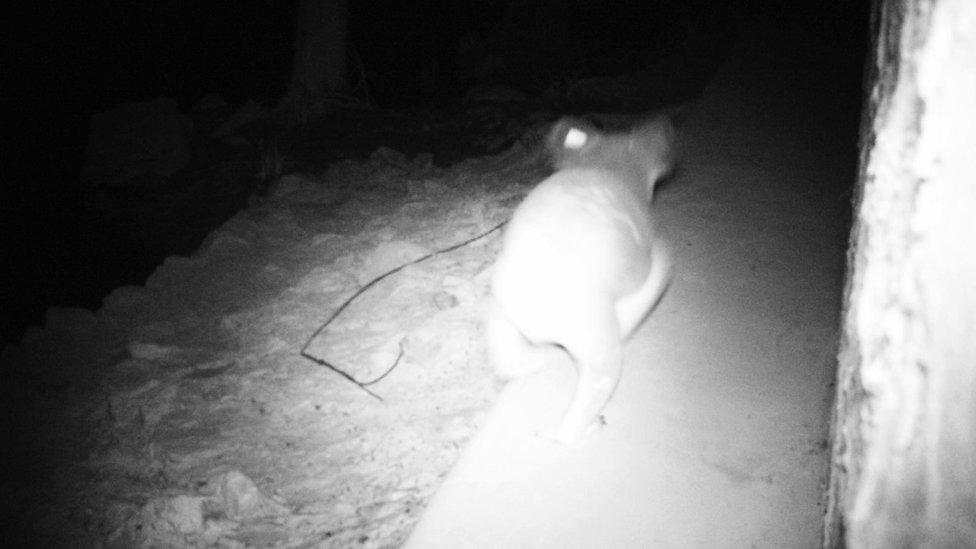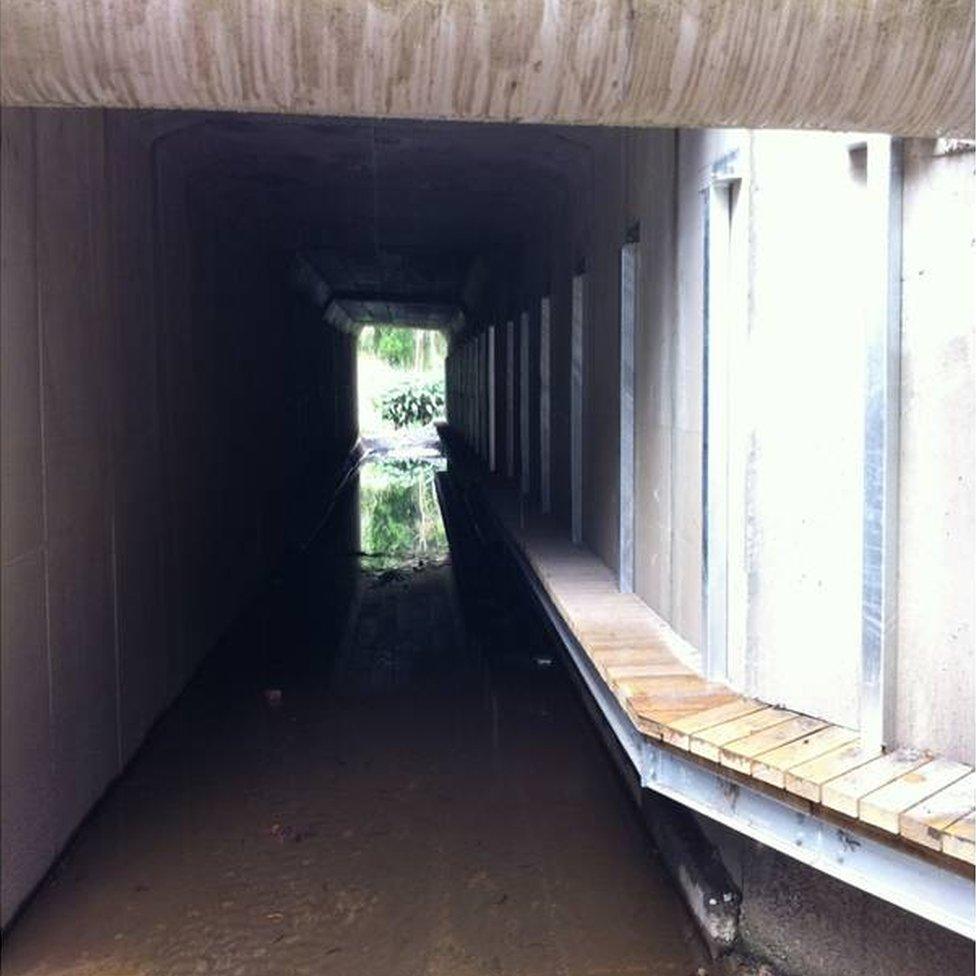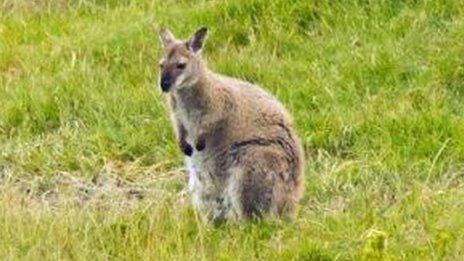Clever koalas learn to cross the road safely
- Published

Koalas were "able to learn new tricks" when provided with a safe way to cross busy highways
Koalas have quickly learned to use wildlife passageways to cross busy roads in Australia's Queensland state as they move between habitats, writes Myles Gough.
A new study tracked 72 koalas living near six wildlife crossings, specially installed by the Queensland government between 2010 and 2013.
It was the first study to test the effectiveness of the crossings, which were part of a $20 million retrofit project to help stop roadway deaths of the vulnerable marsupial.
"I was really sceptical about whether the animals would use them," says Prof Darryl Jones, a behavioural ecologist at Griffith University in Brisbane who studies the impact of roadways on wildlife.
"I have to admit straight up that I thought koalas were going to be a pretty dumb animal. They spend most of their time stoned on eucalyptus oil."
"But that's not the case. This proves they really can innovate," he says. "No koala has ever walked under a road on a ledge ever before in its evolutionary history, and indeed they were doing it within a couple of months."
"They were able to learn new tricks far faster than anyone would have thought."

They may be 'stoned on eucalyptus oil', but researchers say koalas are smarter than they are often given credit for
The study, published in the journal Wildlife Research, used multiple technologies to track individual koalas, including cameras, GPS collars and newly-developed wireless identification chips, which communicated with devices at the entrance and exit of each crossing.
"This is going to be very influential in terms of showing accurately and reliably that the animals do use these structures," Prof Jones says.
Crossings and wildlife-proof fences were installed at hotspots where there had been continuous incidents of koalas being struck by vehicles.
While roadways still pose a threat to koalas, Prof Jones says road deaths have "almost vanished" at sites where the crossings have been installed.
Koala-sized bridges
Koalas are listed as vulnerable in Queensland, New South Wales and the Australian Capital Territory, and are protected under national environment law.
In 2010, the Queensland government released a Koala Population Report, which showed there had been a 68% reduction in the local population of koalas near Brisbane over 10 years.
"This is a terrifying decline," Prof Jones says. "It just can't go on, or else you really are looking at extinction down the track."

One of the water culverts retrofitted with bridges to allow animals safe passage beneath a busy road
Despite being tree-dwelling creatures, koalas are often moving along the ground in search of new trees, food sources, water and mates. A lot of this movement happens at night and roadways are considered one of the main threats to koalas.
To reduce the road toll, the state government began rolling out specialised wildlife fences. While these are effective at containing animals, Prof Jones says they are not a solution.
"It's really important that the animals are still able to move from one place to another," he says.
"If they get fenced off in two isolated patches their chances of survival are so much lower."
Prof Jones and his team were enlisted to help design a cost-effective solution. Rather than build new bridges, they decided to modify existing water culverts, or drainage tunnels, which pass underneath roadways. Elevated ledges were built to help keep the animals dry.
To test the effectiveness, the research team caught and tagged koalas on either side of the crossings, in a region stretching from Brisbane to the Gold Coast.

Other animals were also filmed using the crossings
Over the course of the 30-month study, the researchers verified 130 koala crossings, though only about 21% of the tagged koalas used the structures.
The team's cameras also caught a number of other animals using the wildlife crossings, including echidnas, goannas, possums and wallabies.
Koala intelligence 'underestimated'
"They have used multiple techniques and shown that, yes, koalas will use these structures," says Associate Professor Mathew Crowther, a wildlife ecologist at the University of Sydney, who was not involved in the study.
He says the study is significant because it tests the effectiveness of the infrastructure.
"A lot of times, researchers just measure population drops on either side of the road," he says. "Whereas here they are studying what the individual koalas are doing."
Prof Crowther says the biggest threat to koalas is habitat loss, and roadways are connected to that, forming "killing fields" between habitats.
He says wildlife crossings are a good option to help reduce road deaths of koalas and other animals, but they need to be monitored to ensure they are working.
While Prof Crowther says it is interesting that some koalas have learned to use the structures to cross roads, he is not altogether surprised and says the animals' intelligence is often "underestimated".
Despite poor vision, he says koalas have great hearing and sense of smell, and are constantly negotiating a very complex landscape.
- Published4 April 2016

- Published22 June 2016
